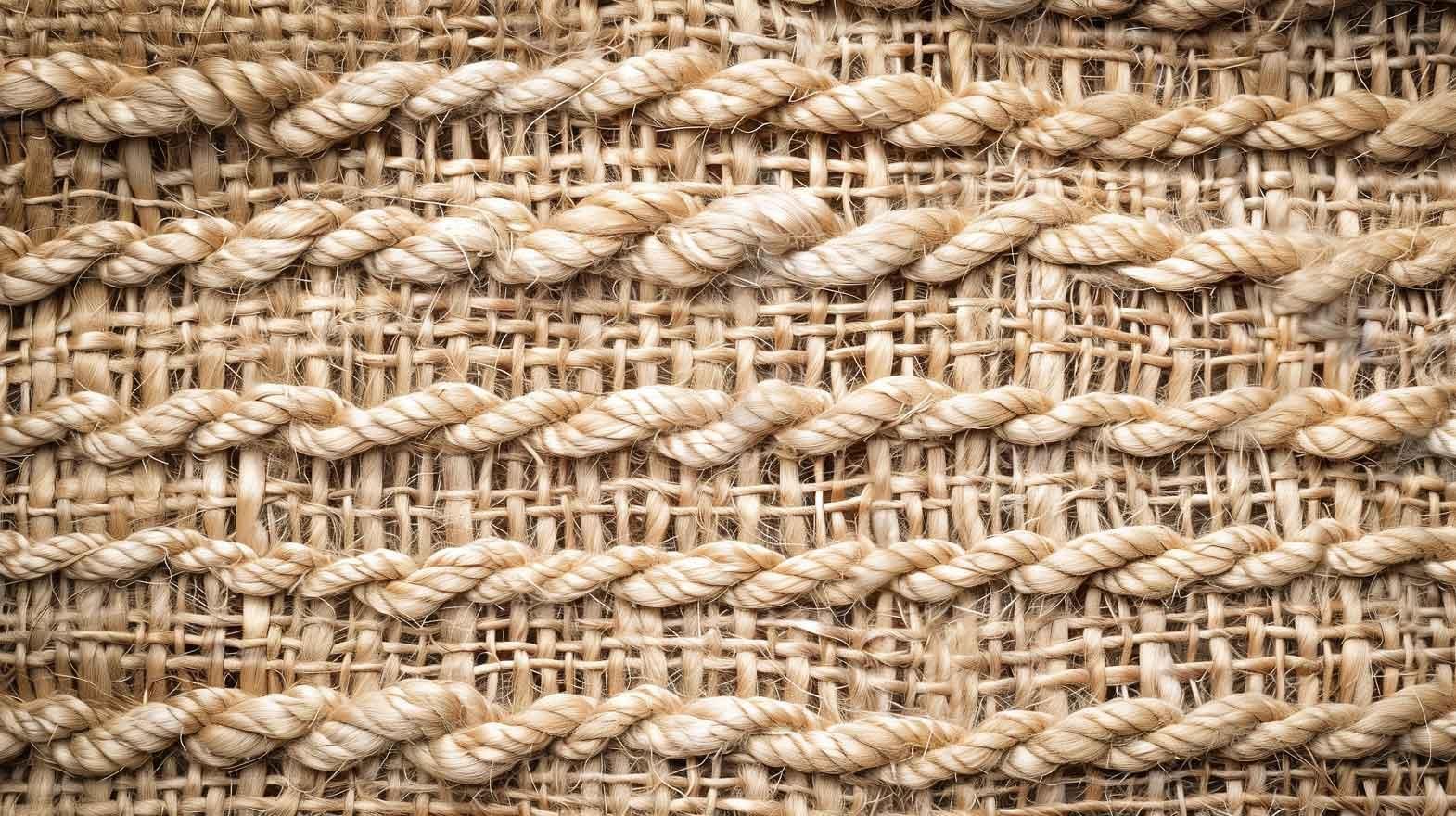For centuries, jute, primarily grown in the Ganga Delta region, has been an integral part of India and found widespread use in apparel and non-textile applications. The significance and utilization of jute expanded to different parts of the world, where it is often referred to as "hessian fibre." However, with the emergence of synthetic fibres in the mid-20th century, jute witnessed a decline in many of its industrial applications. Nevertheless, it is now experiencing a resurgence in importance due to its sustainable properties. Jute is increasingly employed in various value-added and diversified applications, thus retaining its shine in the market.
The demand for jute is on the rise owing to its techno-commercial cost competitiveness and eco-friendly biodegradable characteristics. It finds application in various end-use sectors, including:
Apparel: Jute's lustre, softness, and uniformity make it ideal for the production of comfortable clothing, particularly pullovers and intimates.
Home Textiles: Jute has traditionally been used for floor coverings, mats, curtains, chair coverings, and carpets.
Industrial/Technical: Thanks to its long length and impressive tensile strength, jute is widely used in making ropes and twines for industrial purposes. It is also utilized in crafting baskets and bags for storing grains and agricultural products.
Other: In some Middle Eastern and African countries, jute is employed as an herb and food, particularly in the preparation of soups. Additionally, jute leaves are consumed as a food source in parts of India.
The jute plant originally hails from the Indian subcontinent, which provides favorable warm and wet climatic conditions for its cultivation. India and Bangladesh collectively account for approximately 95% of global jute production, highlighting the significance of this "Golden Fibre" in the region.
Jute fibre is 100% bio-degradable, recyclable and environmentally friendly. Jute cultivation helps reduce carbon footprints. It is estimated that a hectare of jute consumes about 15 MT of carbon dioxide and releases about 11 MT of oxygen. The plant grows to an average of 10 to 12 feet in height and the fibre is obtained from the inner baste tissues of its stem.
The process of separating and extracting fibres, glued together by natural plant pectines, is called retting and traditionally involves submerging stems in water for 10-30 days. Modern technology makes use of fungal or bacterial enzymes to do the job. After Retting, non-fibrous matter is removed by manual scrapping or by mechanical beating. The washed and dried fibres are processed using eco friendly batching oil/lubricant and suitable enzymes to remove them. Subsequently, it is passed through carding machines to make it finer, softer and cleaner in appearance. The fuzz, small fibre ends projected from the surface of yarn, is removed by enzymatic bio-polishing to improve handle and appearance.
Jute has a complex chemical composition and needs careful processing parameters to retain desired fibre characteristics and avoid undue damage. Its physical properties and chemical composition are in the table below:
In India, jute is one of the most important cash crops. There are about 78 jute processing mills, concentrated mostly in the eastern part, which support around 4.0 million workers involved from farm to fibre production. The Indian jute industry has been expanding and offering wide range of lifestyle consumer products which makes India the largest consumer of jute in the world. The United States of America is the biggest market for Indian jute-based products followed by the United Kingdom, Germany, Italy and Spain which contribute exports of about Rs 1,000 crore to the Indian economy.
The use of jute has expanded beyond traditional applications and it is being used in various value-added textile segments. Diversified jute products consist of high performance technical textiles, geotextiles, composites etc. Jute fibres are carbon-dioxide neutral and naturally decomposable. Jute fabric is used to control soil erosion, to protect seeds, weed control and many more agricultural and landscape applications.
Jute textiles are used in camouflage articles as it blends with surrounding grass or brush. Diversified by-products from jute find use in cosmetics, medicine, paints and other products. Jute sticks are used as fuel and fencing materials.
Jute fibre is widely used by itself or in blends with other natural or synthetic fibres to make industrial twine and rope. Various other uses of jute involve manufacturing of carpet backing cloth and canvas. Jute cloth is used for making eco-friendly packaging, wrappers, wall coverings and home furnishing upholstery. These are good substitutes for forest wood and bamboo for production of particle boards, pulp and paper.
To colour jute fibre, direct, reactive, vat and sulphur dyes can produce a variety of shades depending on the end-use. Non-cellulosic constituents in jute have made it unique with respect to dyeing as jute fibre can also be dyed with dyes like acid, metal complex, basic, etc. Dyeing is carried out mainly by jigger dyeing and padding methods. After-treatment of dyed jute fabric produces optimum fastness characteristics. The performance of major dye classes are summarized below:
- Direct Simple dyeing process/low cost. Moderate wash fastness with moderate to high light fastness
- Reactive Simple dyeing process/moderate cost. Good wash fastness with moderate to high light fastness
- Vat Complex dyeing process/high cost. High wash fastness and light fastness
- Sulphur Slightly complex dyeing process/low cost. Moderate wash fastness and light fastness. Dull shades, limited shade gamut
Among all classes of dyes, dyeing jute with direct dyes is popular and commonly practiced in industry because it offer better exhaustion, is a simple dyeing method and produces good depth of shades. Keeping in mind the different challenges faced by jute dyers, a Gujarat-based company, pioneers in dyestuff manufacturing in India, offers Tuladir/Atul Direct range to meet critical fastness and performance requirements.
The special features and associated benefits of these dyes are as follows:
- Wide shade gamut
- High tinctorial strength
- Low electrolyte consumption
- Excellent build-up
- High exhaustion profile
- Excellent lab and bulk reproducibility
- Easy wash-off
- Good level dyeing performance
- Brighter shades
Dyeing method for Tuladir/Atul Direct dyes is furnished below:
Auxiliaries:
RUCOGAL DSA (Dye bath conditioning agent) : 0.5 - 1.0 g|l
RUCOGAL RLC (Levelling agent) : 1.0 g|l
HYDROCOL 2FD (Dye-fixing agent) : 0.5- 1.5% (owf)
With the increasing global awareness towards the use of sustainable, bio-degradable and eco-friendly products, jute is progressively regaining and widening its usage in both the traditional and diversified applications. So, modification of feel and look has become essential depending on the end-use requirement to increase demand for bright, wash- fast and light fast dyed jute substrates.
The demand of jute articles like wall hangings, mats, decorative handicrafts, shopping bags, soft luggage, wall covers, dividers, carpets and upholstery fabric are increasing day by day. The awareness among consumers is certainly remarkable and the producer's ability to translate, innovate and create has developed opportunities for profiting from the growing consumer demand. Specialty direct dyes are tailor-made solutions to satisfy overall demands of jute processors for value added products.
References:
- Wikipedia.org
- Chattopadhyay S.N., Pan N.C. & Roy A.K., Source: New Cloth Market
- Chakrabarti S.K., Eco-Friendly processing of jute & allied fibres, Source: Indian Jute Industries Research Association









Comments